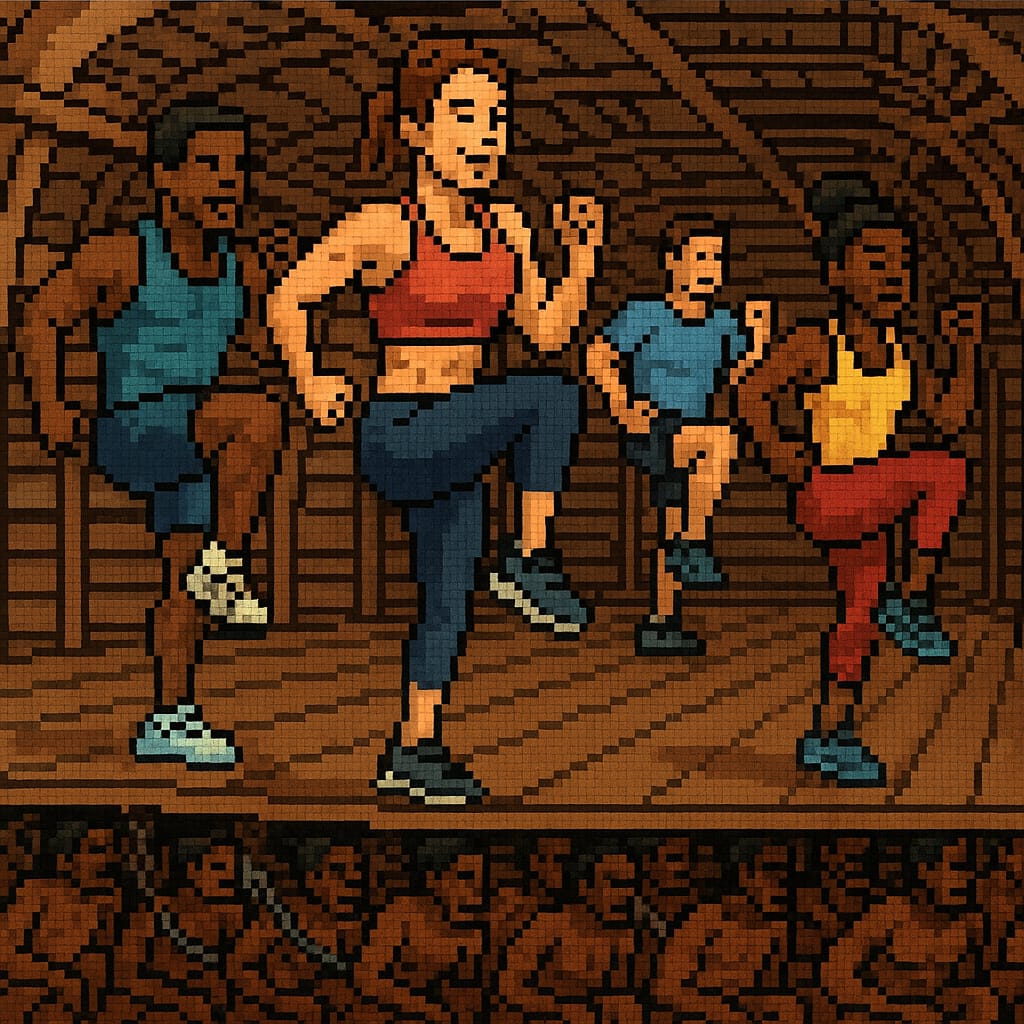The public is not a simple location, not a 'place' nestled entirely within stable coordinates. Not a mere chalice or an orphaned container holding humans in their busy mobilities. Not a background to the theatre of human sociality. Instead, the public is an imperative, a field of roaming intensities that convenes and composes bodies in their open-ended becomings.
We might suppose that when 'we' move through 'the city'; navigating its networks; braiding its sidewalks with hustling feet; reading chalked menus hastily slapped on windows; stopping at red lights and exhaling when they turn green; and, generally, shuffling from here to there, the 'we' making these movements refers to complete, autonomous, self-directed individuals simply moving past a background of noise. But there is no pre-relational 'we' in any independent sense. No intact identities moving atomically through Brownian fluids. The concrete walls and asphalt roads and neon-lit signs around us are social actors with compositional powers. We are made in the interstitial loops and stitched in the creative inquiry of the public, which is always more-than-human.
I know that how we walk, talk, speak, eat, see, feel, and make sense of identity are materially entangled with the architecture of the public. And I know this in the very crippling ways that European streets summon 'my' body.
In recent times, very close colleagues, collaborators, and my dear family have gently massaged my way into the undiagnosed realization that I too (and not just my beautiful son, Kyah Abayomi) might be "on the autistic spectrum." Almost everyone who works closely with me, who understands how performatively intense it can get for me to be in 'social' spaces (despite my work as an enthused scholar of the public), how awkward I am with ordinary tasks, and how I can fall to pieces and be overwhelmed by litter, has a story to tell about my strange behaviours.
One of these behaviours is activated when I'm walking on gum-littered sidewalks - which have for a good while defined many European cities. Discarded blobs of chewed-up gum dotting the surfaces of the city. I notice them all. I can't tear my eyes away from them, and yet my body recoils at the sight of them. The white ones. The coloured ones. Flattened by oblivious feet. Some are rendered opaque by muddied tracks, blending into the brown of the pedestrian; others are lucid and radioactive and green, amoeba-like, sticky and pulsing with alien intelligence. I know them all. It's the reason I stay indoors; it's my greatest anxiety when sitting in a restaurant with an eager host (while masking the morbid fear that there might be a hive of chewed gum-people underneath the table); it's the reason I do not have many memories of the skylines of the many cities my work has carried me to: my head is lassoed to the ground; my gait evasive, my posture uneasy. My time is occupied with doing everything I can to step in the spaces between, to avoid walking on them.
I once left my shoe where it was 'exploded' because my entire body "knew" - with a strange confidence - that I had stepped on one of these gummy ontological mines. I limped home. And when I was a kid, my familiar bullies - knowing of my crippling aversion to gum - played a prank on me by planting the stuff on my bench and on the floor beneath. I went home without shoes.
Gum is how I know that the public is not background noise. The public is a ritual of creation, and the sticky critters that are overtaking the surfaces of European cities like Hamburg, where my family and I are living for the time being, are conducting experiments of their own. No one else seems to notice them, but I can hear them and feel their textures and gestures. Their cavorting excesses. Their inhuman trafficking and parliamentarian arguments.
It's not just me, however. In ways too molecular to be languaged, we are all summoned by these choreographies of posture. We are disciplined into shape and subjectivized by the affective strengths of the public in its difference-making work. In how it measures identities, access, experience, and the monster.
If you asked me, I wouldn't want to be cured of my awkward public behaviours. I don't want to look up or be mesmerized by the straightforwardness of citizenry. I am too busy being terrified of the critters around me. But don't pity me just yet: somehow that sidling intelligence traces out a different public, a haunting one, a generatively incapacitating one. A black geography. There in the wandering trace, the errant line, the monstrous gait, the awkward fall from the grace of the typical, lies the seed of the new.
(Image of holes in stone by Hannah Voggenhuber)
















